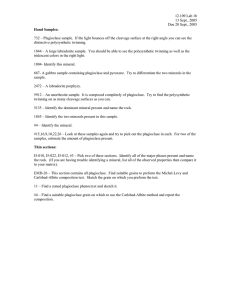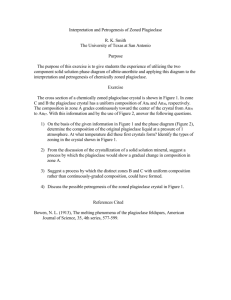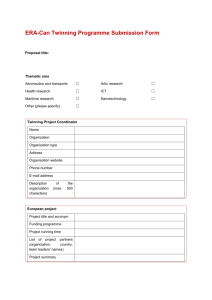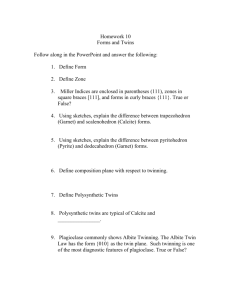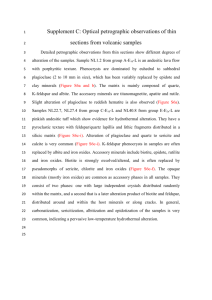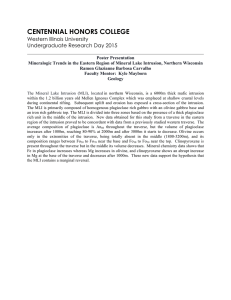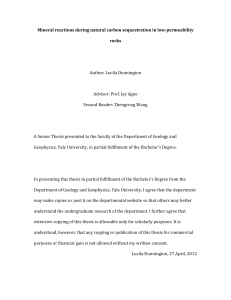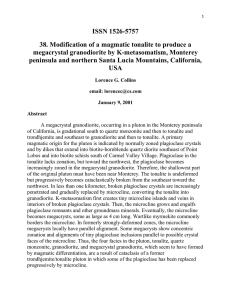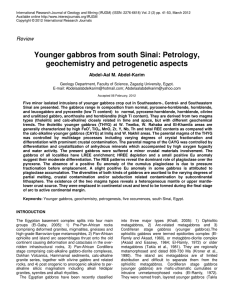Plagioclase Group ⇔ Anorthite Solid solution between Albite
advertisement
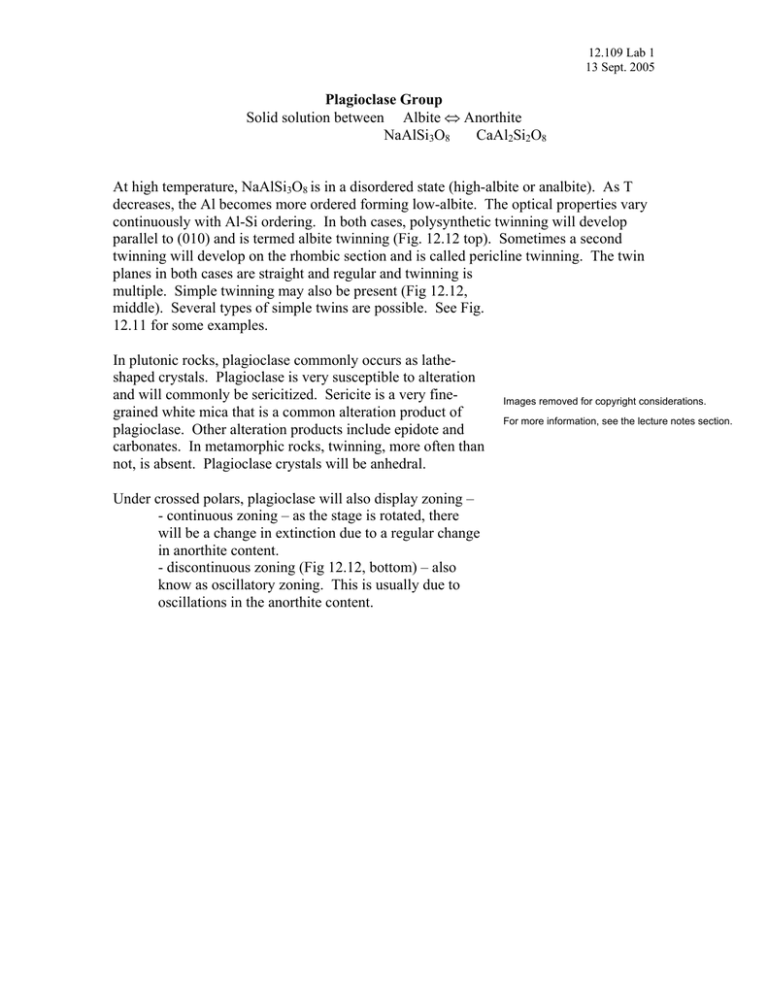
12.109 Lab 1
13 Sept. 2005
Plagioclase Group
Solid solution between Albite ⇔ Anorthite
NaAlSi3O8
CaAl2Si2O8
At high temperature, NaAlSi3O8 is in a disordered state (high-albite or analbite). As T
decreases, the Al becomes more ordered forming low-albite. The optical properties vary
continuously with Al-Si ordering. In both cases, polysynthetic twinning will develop
parallel to (010) and is termed albite twinning (Fig. 12.12 top). Sometimes a second
twinning will develop on the rhombic section and is called pericline twinning. The twin
planes in both cases are straight and regular and twinning is
multiple. Simple twinning may also be present (Fig 12.12,
middle). Several types of simple twins are possible. See Fig.
12.11 for some examples.
In plutonic rocks, plagioclase commonly occurs as latheshaped crystals. Plagioclase is very susceptible to alteration
and will commonly be sericitized. Sericite is a very finegrained white mica that is a common alteration product of
plagioclase. Other alteration products include epidote and
carbonates. In metamorphic rocks, twinning, more often than
not, is absent. Plagioclase crystals will be anhedral.
Under crossed polars, plagioclase will also display zoning –
- continuous zoning – as the stage is rotated, there will be a change in extinction due to a regular change in anorthite content. - discontinuous zoning (Fig 12.12, bottom) – also know as oscillatory zoning. This is usually due to oscillations in the anorthite content. Images removed for copyright considerations.
For more information, see the lecture notes section.
12.109 Lab 1
13 Sept. 2005
Identification in thin section:
Plane light – colorless, may be cloudy or dusty due to alteration. Low positive or negative relief. Crossed polars – commonly displays polysynthetic twinning and/or zoning. Biaxial (+) or (-) with variable 2V (See Fig 15.8). Identification in hand sample:
The plagioclase feldspars can range in color from colorless to
white to greenish yellow and even flesh red. They have a vitreous,
pearly luster. Polysynthetic twinning is diagnostic of plagioclase.
See hand sample 1844 as a good example of what to look for. The
plagioclase feldspars show perfect {001} cleavage and good {010}
cleavage.
Image removed for copyright considerations.
Minerals of the plagioclase series:
For more information, see the lecture notes section.
Albite- NaAlSi3O8 end-member. Oligoclase- Found in granodiorites and monzonites. Andesine- Found as grains in andesites and diorites. Labradorite- Common in gabbros and basalts. Recognized by the iridescent play of colors it displays.
Bytownite- Found as grains in gabbros.
Anorthite- CaAl2Si2O8 end member.
Determining Plagioclase composition: There are several ways to determine the anorthite content of plagioclase by using its optical properties. We will practice two of them. A. Michel-Levy Method- Uses the property that the extinction angle measured to the
(010) composition plane varies with composition. Two extinction angles are measured
(see fig 12.15 and 12.16). For a detailed account, refer to Nesse, pg. 272.
Images removed for copyright considerations.
For more information, see the lecture notes section.
12.109 Lab 1
13 Sept. 2005
B. The Carlsbad-Albite method – is a variant of the Michel-Levy method but requires
only one properly oriented grain (rather than several grains as in the previous technique).
See Nesse, p. 273 for a detailed account of how to perform this test.
Images removed for copyright considerations.
For more information, see the lecture notes section.
